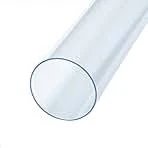Oct . 19, 2024 14:50 Back to list
cutting hdpe sheets
Understanding the Cutting of HDPE Sheets Techniques, Tools, and Applications
High-Density Polyethylene (HDPE) is a versatile thermoplastic that is notable for its strength, durability, and resistance to chemicals and moisture. Because of these properties, HDPE is widely used in various applications, including packaging, piping, and manufacturing components for construction, automotive, and agricultural industries. One of the essential processes in utilizing HDPE sheets in projects is cutting. This article explores the various methods of cutting HDPE sheets, the tools required, and their applications.
The Importance of Cutting HDPE Sheets
Cutting HDPE sheets accurately is critical, not just for visual appeal, but also for the functionality of the final product. Proper cutting ensures that the dimensions fit particular requirements, whether for machining, assembling, or installation. Additionally, clean cuts minimize the chances of defects which could lead to hazardous situations, especially in construction and manufacturing processes.
Methods of Cutting HDPE Sheets
There are several methods to cut HDPE sheets, each with its advantages and suitable applications
.1. Sawing - Circular Saws This method uses a rotary blade to make straight cuts. A circular saw is efficient for cutting large sheets but requires proper technique to avoid melting the plastic due to heat. - Band Saws Ideal for intricate cuts, a band saw allows for versatility in cutting shapes and curves. It’s also generally cooler than circular saws, reducing the risk of melting.
2. Laser Cutting - This technique uses a high-powered laser to cut through materials. Laser cutting provides precision, allowing for intricate designs. It produces minimal waste and can handle complex shapes, making it suitable for prototypes and small production runs.
3. Waterjet Cutting - Waterjet cutting involves a high-pressure stream of water mixed with an abrasive substance. This method is also highly precise and does not generate heat, making it useful for thick sheets of HDPE and applications where heat-sensitive properties are a concern.
cutting hdpe sheets

4. Router Cutting - A CNC router can be used for cutting HDPE sheets with computer-controlled precision. This technique is particularly useful for mass production, where uniformity and repeatability are required.
Essential Tools for Cutting HDPE Sheets
When cutting HDPE sheets, the choice of tools is crucial for a successful outcome. Some of the most common tools used include
- Circular Saw Equipped with carbide-tipped blades, circular saws can make quick, straight cuts. It’s advisable to use a blade specifically designed for plastic to reduce melting. - Band Saw A fine-toothed blade will provide smooth cuts without jagged edges. - CNC Router This is ideal for complicated designs and is programmable for repetitive tasks. - Jigsaw Suitable for cutting curves or irregular shapes, jigsaws work well for smaller projects. - Utility Knife For thin sheets, a utility knife can suffice for simple, straight cuts.
Applications of Cut HDPE Sheets
The applications of cut HDPE sheets are diverse, owing to the material's robustness and chemical resistance. Some notable uses include
- Outdoor Signage HDPE sheets are lightweight yet durable, making them excellent for signage that needs to withstand environmental conditions. - Industrial Parts and Components Used in the manufacturing of car parts, containers, and various machinery components due to their strength and resistance to wear. - Construction and Landscaping Used as protective barriers, insulation, and for waterproofing applications. - Furniture Manufacturing HDPE sheets can also be utilized in making outdoor furniture that is weather-resistant.
Conclusion
Cutting HDPE sheets may seem straightforward, but it requires knowledge and precision to ensure the best results. With the right tools and techniques, one can achieve clean, accurate cuts that enhance the quality and applicability of HDPE in various industries. As technology evolves, new cutting methods will continue to emerge, improving efficiency and expanding the possibilities of what can be achieved with HDPE materials. Understanding these methods will empower manufacturers and DIY enthusiasts alike to take on projects with confidence and creativity.
-
Durable PP Rigid Sheet: Versatile & High-Quality Plastic Panels
NewsAug.08,2025
-
Premium Glossy PP Rigid Sheet – Durable & Versatile
NewsAug.07,2025
-
High-Quality HDPE Sheet | Durable Plastic Panels
NewsAug.06,2025
-
High-Precision PVC Rigid Sheets for Vacuum Forming | AI-Optimized
NewsAug.05,2025
-
Durable PVC-M Water Supply Pipes | 60-Year Life
NewsAug.04,2025
-
Premium HDPE Water Supply Pipes: Durable & Leak-Proof
NewsAug.03,2025

